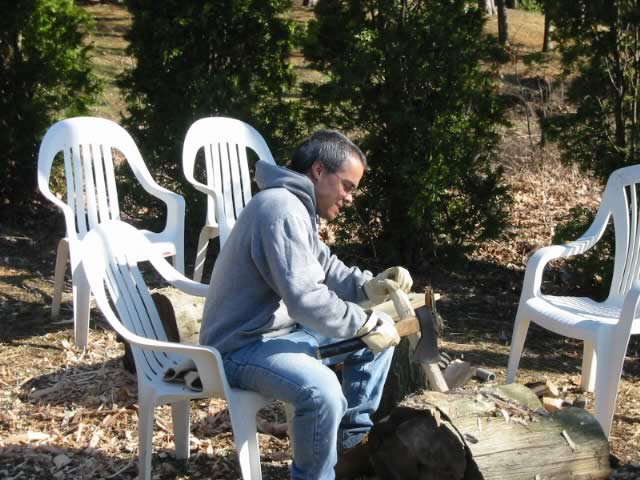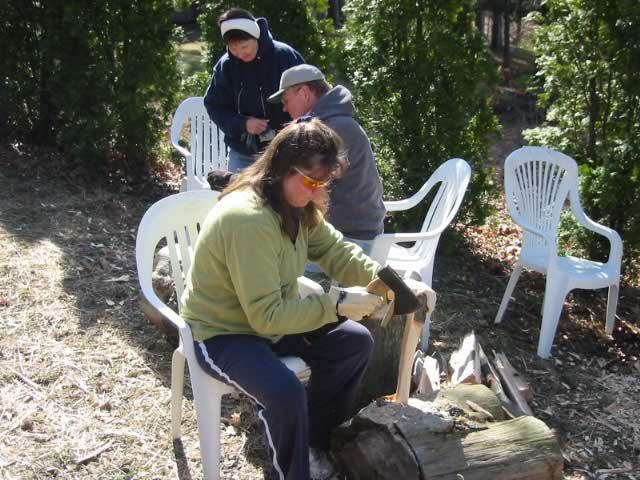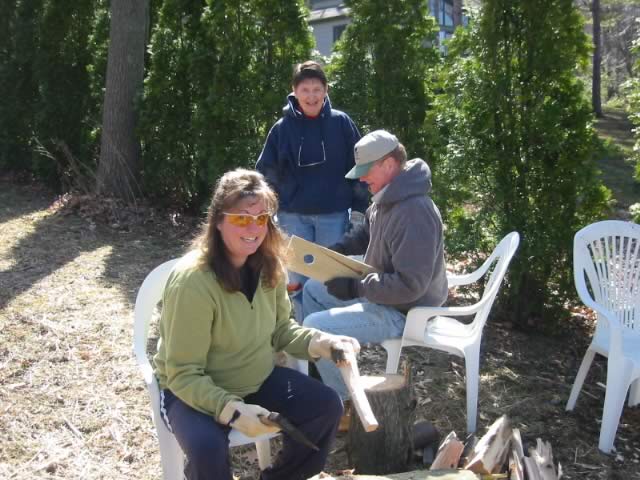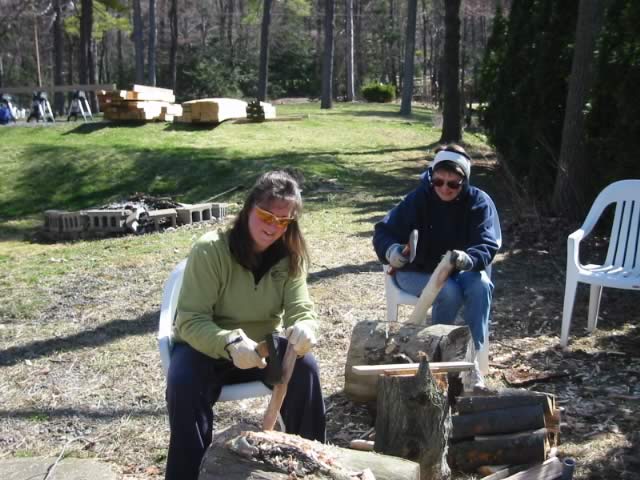- Starting Up
- Rough Sawn Lumber Delivery
- Planning the Timber Frame Gazebo
- Peg Making (It’s a hard knot life for us…)
- The Foundation (sill plates and joists)
- Flooring (half-lap)
- Posts and Beams (part 1)
- Braces – Posts and Beams (part 2)
- Bent Assembly : Posts and Beams (part 3)
- Bent Raising: Post and Beams (part 4)
- Rafter Creation
- Top Plates – Tying it all together
- Raising the Rafters
- Windows Resurected
- Roof Decking and Siding Preparation
- Raising the Roof
- Cedar Shingles
- Siding the Gazebo – Shiplap
- Screens with Wood Frames
- Making Wooden Bolts
- Door with Wooden Hinges
Dowel can’t be used for the larger pegs because it is dried, so it won’t shrink, so as the surrounding wood shrinks (the rough sawn lumber is pretty green), it would split the timbers. As such, we have to carve our own pegs out of oak firewood. This is done with a hatchet, and sore hands.
 Never swing the axe above your left hand, it may impair your ability to count and do simple arithmetic.
Never swing the axe above your left hand, it may impair your ability to count and do simple arithmetic.
 It is family fun that can be shared by all (mother-in-law and father-in-law)…even my pregnant wife.
It is family fun that can be shared by all (mother-in-law and father-in-law)…even my pregnant wife.
 “Square peg, round hole” has a whole new meaning now. Can’t we buy a pre-built gazebo???” says my dear wife.
“Square peg, round hole” has a whole new meaning now. Can’t we buy a pre-built gazebo???” says my dear wife.
 Mother and Daughter bonding moments, when the wood chips are flying so is the gabbing. Whack a little, talk a little.
Mother and Daughter bonding moments, when the wood chips are flying so is the gabbing. Whack a little, talk a little.
This task continues for days. Disclaimer: No beavers were harmed in the making of this Gazebo.
 These hatchets were modified. I re-ground the blades with a bench grinder to make the edge more like a chisel, only beveled on one side. The bevel should face away from the log (should face the right if you are right handed). Ideally the whole geometry of the axe should change and there are hatchets made for this so the head can get right next to the log, but those are expensive and we didn’t need that many pegs.
These hatchets were modified. I re-ground the blades with a bench grinder to make the edge more like a chisel, only beveled on one side. The bevel should face away from the log (should face the right if you are right handed). Ideally the whole geometry of the axe should change and there are hatchets made for this so the head can get right next to the log, but those are expensive and we didn’t need that many pegs.
 Once the pegs were roughed out with the hatchet, I spent just a little time with a Drawknife (also called a drawshave) to make them smooth and more round. Mine I picked up for less than $10 in an antique shop (just look out for loose or cracked handles).
Once the pegs were roughed out with the hatchet, I spent just a little time with a Drawknife (also called a drawshave) to make them smooth and more round. Mine I picked up for less than $10 in an antique shop (just look out for loose or cracked handles).